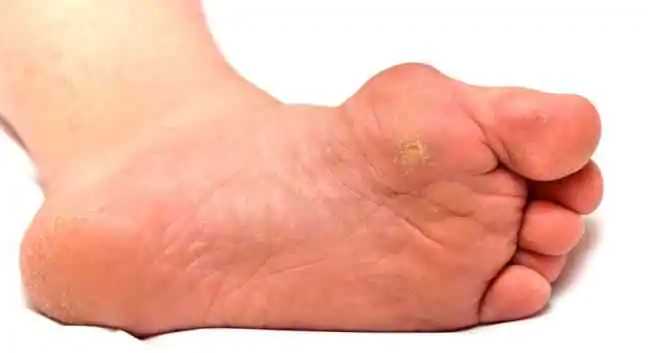I am suffering from diabetic foot
Compliments of the season. I am about 61 years old and have been managing Diabetic Mellitus for years now. Recently, I developed diabetic foot. Although I am managing it but not too well. Please share highlights about this problem. Labaran X. Thanks Labaran for your question. People with diabetes are prone to foot problems that […]

I am suffering from diabetic foot
Compliments of the season. I am about 61 years old and have been managing Diabetic Mellitus for years now. Recently, I developed diabetic foot. Although I am managing it but not too well. Please share highlights about this problem.
Labaran X.
Thanks Labaran for your question. People with diabetes are prone to foot problems that develop due to prolonged periods of high blood sugar levels. Diabetic neuropathy and peripheral vascular disease are the two main foot problems that occur, and both can have serious complications. Diabetes is a disease that causes faulty or insufficient insulin production or low sensitivity to insulin. Insulin is an essential hormone that is responsible for helping cells absorb sugar from the blood to use for energy.
Prolonged periods of high sugar levels in the blood can damage many areas of the body, including the feet.
Diabetic neuropathy can numb the feet, reducing awareness of wounds, infections, and tight shoes. Over time, diabetes can cause nerve damage that leads to numbness in the feet. This can make it hard for people with diabetes to feel sensation in their extremities. The condition also makes it difficult for a person with diabetes to feel irritation, soreness, or infection on the feet.
If a person does not receive treatment for an infection, ulcers and even gangrene can develop. If a person develops gangrene, they may require an amputation.
What are the symptoms?
Foot symptoms of diabetes vary from person to person and may depend on the specific issues a person is experiencing at the time.
However, symptoms might include:
- A loss of feeling and numbness or tingling sensation.
- Blisters or other wounds without pain.
- Skin discoloration and temperature changes.
- Red streaks
- Wounds with or without drainage and painful tingling.
- Staining on socks.
What are the complications?
- If gangrene develops due to an unnoticed wound, a doctor may suggest amputation.
- Foot ulcers or wounds that do not heal and infections, including skin infections, bone infections and, and abscesses.
- Gangrene, when an infection causes tissue death and foot deformity.
- Charcot’s foot, which alters the shape of the feet as bones in the foot and toe shift or break
When should you see a doctor?
- Changes in skin color on the foot.
- Swelling in the foot or ankle.
- Temperature changes in the feet and persistent sores on the feet.
- Pain or tingling in the feet or ankles and ingrowing toenails.
- Athlete’s foot or other fungal infections of the feet and dry, cracked skin on the heels
What are the treatment options?
Treatment for diabetic foot problems varies according to the severity of the condition. A range of surgical and nonsurgical options is available.
Nonsurgical treatment
A doctor will first attempt to treat diabetic foot problems without using surgery. Some methods include:
Keeping wounds clean and dressed.
Wearing immobilization devices, such as a cast boot or total contact cast.
Closely observing any gangrene on the toes until self-amputation occurs, which is when the toes fall off due to lack of blood flow.
Surgical treatment
When nonsurgical treatment does not successfully heal diabetic foot problems, the doctor might consider surgery. Surgical options include:
- The removal of decaying or dead tissue.
- Amputation, ranging from single toe or sections of foot to amputation of the leg below or even above the knee
- Surgical stabilization of Charcot’s Foot.
- An arterial bypass for peripheral vascular disease, which assists blood flow to the area
- Endovascular surgery with placement of stents, which uses small devices to keep blood vessels open.
Diabetic foot care
A person should try to wash the feet every day.
Keeping feet healthy is critical, and a person should be vigilant about foot hygiene. They can take the following steps:
Wear supportive shoes and socks
How to prevent it?
While controlling blood sugar by following the recommended diabetes treatment plans is the best way to prevent these serious problems, self-care and regular check-ups with a doctor can also help prevent problems from developing.
